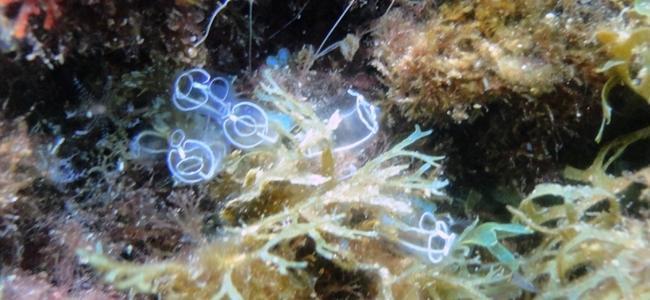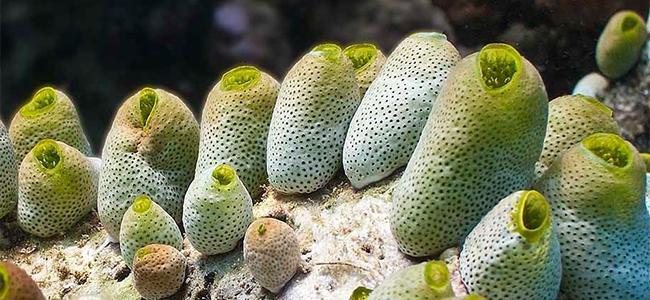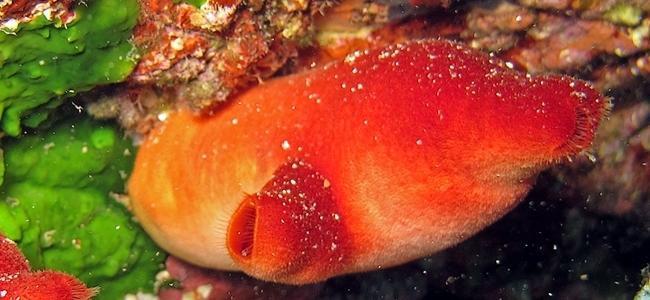The ascidians (Ascidiacea) are a class belonging within the subphylum of the Tunicates, which have about 2,300 species, all of them from marine habitats and characterized by being species fixed to rocky or hard substrates, that is to say sessile. They are distributed by all the seas and oceans of the world, generally in coastal waters.
The body of the ascidians is characterized by being covered with a protective outer layer of tunecine. One of the ends of the body is fixed rocky bottom. At the opposite end, they have two siphons, one that acts as a mouth and through which water enters, and a second siphon called atrial through which the ingested water is expelled. Through this water circuit, and by means of a ciliated pharynx that has numerous gill slits forming an elaborate filtering basket, is how the ascidians are able to capture the particles in suspension from the water. Due to their way of feeding, filtering important quantities of water, they have the capacity to accumulate contaminating substances, bacteria, virus or toxins, if these are present in the water. This makes them excellent bioindicators of the quality of the water in which they live.
There are both solitary and colonial species. Solitary species are usually spherical or cylindrical in shape. Colonial species, all individuals forming the colony, called zooids, are usually grouped under a common cover, and may or may not be interconnected by basal stolons. The sizes of the ascidians are usually between 5 mm and 10 cm
Mainly hermaphrodites, we find species with both sexual reproduction (predominant in solitary species) and asexual reproduction (predominant in colonial species). Sexual reproduction consists, as in many sessile species, in the release of gametes into the water column, producing fertilization externally.


